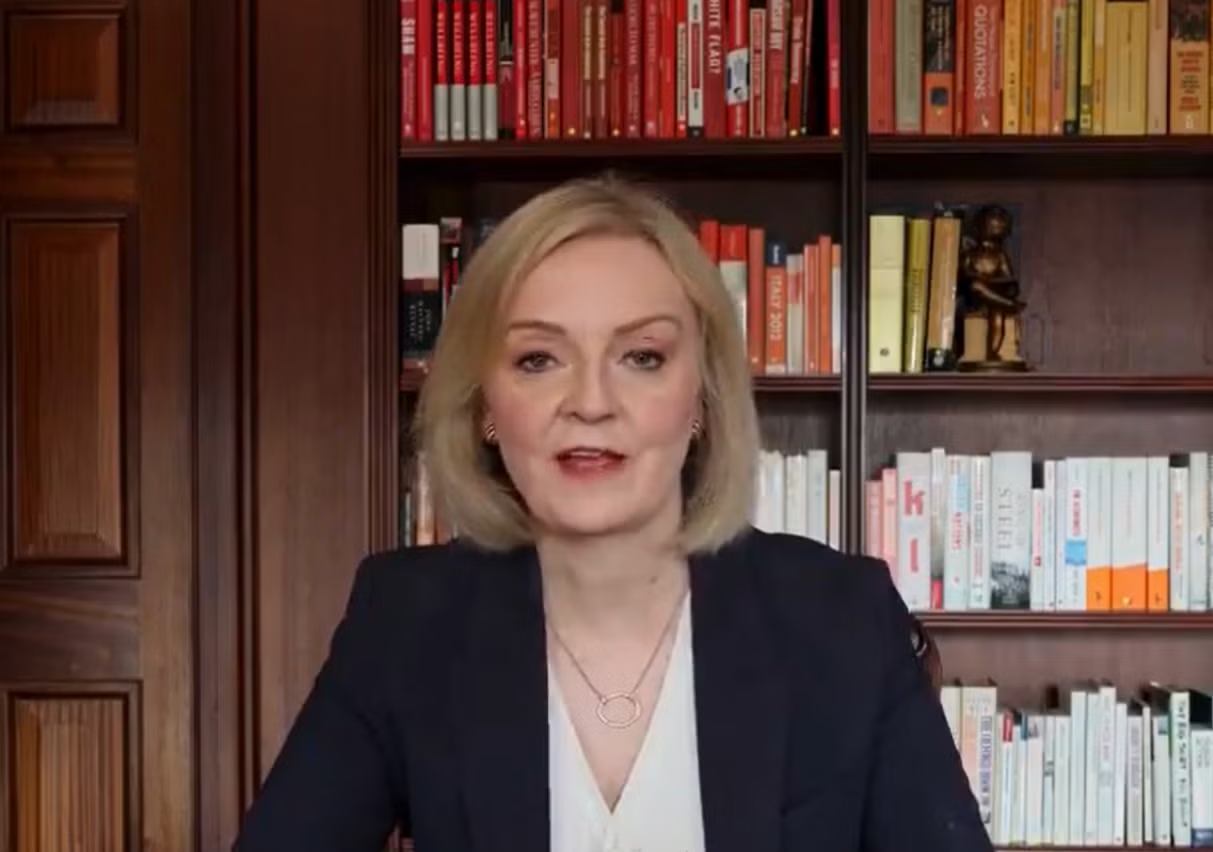Your support helps us to tell the story
Support NowOur mission is to deliver unbiased, fact-based reporting that holds power to account and exposes the truth.
Whether $5 or $50, every contribution counts.
Support us to deliver journalism without an agenda.

Louise Thomas
Editor
When I saw the other day that Liz Truss, the worst prime minister in the history of this or any other planet, organises the books on her bookshelves by colour, a sinking feeling hit me. I colour-code the books in our front room. I even colour-code the recipe books in our kitchen. What does this make me? I don’t want to exist in the same country as Truss, let alone in the same boat. Am I as deeply uncool as that gormless charisma vacuum? As out of touch as a woman who lost an election to a rotting head of lettuce?
We need some context here. Because it looks good, people have been arranging their beloved books by colour for decades. Ten years ago, in fact, it was so commonplace that Slate writer (and part-time interior designer) Kristin Hohenadel felt compelled to tell people that the choice was “not a moral failure”. Even then, Hohenadel was noticing that colour-coding was at risk of becoming a cliché: “The question of whether it is a cool design idea or proof that you are an illiterate poseur seems to spark divisive debate every time someone discovers it anew.” During the Covid Zoom calls era, when we all judged one another’s bookshelves as a matter of course, colour-coding experienced another popularity surge as people strived to impress their colleagues. But the queue of people ready to criticise the look is equally thriving.
Looking for reassurance, I enlisted the advice of Karl Openshaw at interior design company Blocc. He wasn’t overly enamoured with the idea. “We’re all very, very individual and I’d hate to say that there’s a hard and fast rule,” he says. But his personal opinion is that colour-coding is “a little bit passé” and “can look a bit twee”. Because books can’t slide perfectly down a colour gradient (as I know – I have grown old trying to tell the difference between 39 shades of light blue), Openshaw thinks that makeshift colour-coding can be a risky design choice.
If, however, you like the idea of organising books by colour and happen to have tons of money, Openshaw recommends companies that can bind your books in specific colours, making the colour-matching more precise and completely under your control. “It’s not very budget-friendly,” he says, “but when it comes to aesthetics, for us, budgets sometimes go out the window.”
It can be an improvement to experiment with putting books in different positions – lying them down, having their cover face the room – says Openshaw. In the case of my bookshelves, he thinks that putting colour-specific objects next to the books would look good – a yellow bowl alongside the yellow books, for example. Interior designer Amanda Davies recommends a similar design choice; she doesn’t necessarily bunch her books together but will space them out, sitting them next to art, trinkets, and things she’s found at book fairs.
Some people, myself included, display all of their books, perhaps as a way of saying, “Look at all the sexy knowledge in this house” (even if I have only read 0.6 per cent of the volumes on display). For Davies, however, this would be a bit much. She puts out some books for various reasons – as a reminder to read them, for example – and keeps others out of the limelight. She thinks colour-coding looks great but issues a damning verdict: “Everything has its time and its place, and maybe this is the colour-coordinated bookshelf’s last gasp for breath.”
What drives the case against colour-coding in the first place? Everyone will have different takes, but I suspect a great deal is born of snobbery on the part of well-read people, who (mistakenly) put colour-coding on a par with Instagrammers who display their books spine backwards, creating a sea of beige. It is easy to take against people on social media who spend a lot of time making their lives look pretty. People on Instagram don’t care about reading, goes the thinking. They’re morons. But to draw a parallel between illiteracy and aesthetic appreciation is like saying someone who decorates cakes doesn’t know how to eat food. It doesn’t hold up.

So how do real, dyed-in-the-wool book lovers feel about it all? Martin Latham founded the Canterbury Waterstones in 1990 and wrote the book The Bookseller’s Tale. I feared that Latham might think of colour-coding as a fad, a hopeless way of keeping track of one’s books. While he might have thought so originally, he changed his mind when he learned that the best bookseller he has ever met organises her books by colour. “Her argument would be, I suppose, [that] she loves them so much (and knows where they all are) that she can colour-code them.”
This is how I feel. Naysayers argue that you can’t find the book you want if your books aren’t organised by author. In practice, I’ve discovered that this is rubbish. And at home, Latham will keep fiction separate from history, for example, but within fiction he has no system whatsoever. He doesn’t mind this at all – when he tries to find a book in his collection “it’s like looking over a load of people you’ve met on the steps outside Moscow” – but no one would pretend that it’s more efficient than the colour system. I know off the top of my head that if I want to find Joseph Anton by Salman Rushdie, for example, I’ll head straight to the blues. (Yes, I deliberately chose a heavyweight book to seem more intelligent.)
In the shop, Latham has discovered that a directive to bunch together travel literature and travel guidebooks has annoyed him because now the blue spines of the Lonely Planet books are broken up by other colours. “I’m more susceptible to colour-coding than I thought,” he admits. And, shortly after I contacted him, he found that several people admitted to colour-coding their own books. “So there is a hidden world of weirdos like you and Truss out there,” he says.
To draw a parallel between illiteracy and an aesthetic appreciation is like saying someone who decorates cakes doesn’t know how to eat food
I suspect that people who hate colour-coded bookshelves would say that we are far from “hidden” – that we are simply sheep following a shallow fad. But is the reign of the colour-coded bookshelves really a victory of style over substance? Not in our home, I would argue. I’m not proud of this habit particularly, but I’m currently reading about seven different books for various reasons. They include, if you’re interested, Be Funny or Die by Joel Morris; Berserker! by Adrian Edmondson; and All the Rage by Darcy Lockman. Words are the source of my living as well as accounting for a good chunk of my downtime. I am convinced that organising our books by colour has made me more likely to notice them. Perhaps any reorganisation would do that but the unique thing about colour-coding is that you’re always reshuffling and moving tomes around – holding them, discovering them anew.
It is baseless to believe that books can’t be both beautiful and edifying; that they are an aspect of our life too lofty to be associated with any kind of vanity. Colour-coding your books looks great. I don’t agree with Liz Truss on anything else, I’m happy to say, but I agree with her on that.
Disclaimer: The copyright of this article belongs to the original author. Reposting this article is solely for the purpose of information dissemination and does not constitute any investment advice. If there is any infringement, please contact us immediately. We will make corrections or deletions as necessary. Thank you.



